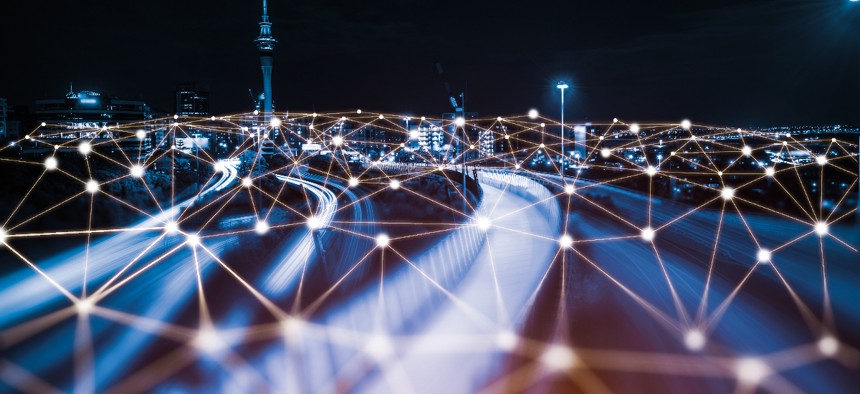Energy Looks to Quantum Sensors for Grid Optimization

Blue Planet Studio/Getty Images
Quantum sensors can modernize the U.S. electrical grid through on-site technology with the long-term aim of supporting climate resilience.
Quantum sensing research and development is one of the Department of Energy’s priorities, according to an agency official, as the devices show promise for electrical grid efficiency and sustainability efforts.
Rima Oueid, a senior commercialization executive in Energy’s Office of Technology Transitions, discussed with Nextgov the agency’s larger goals surrounding implementing quantum information science and technology, or QIST, in existing infrastructure, emphasizing the myriad benefits of quantum sensor application.
“We are looking at quantum sensors that can be utilized for monitoring the grid, for anomaly detection and making the grid more resilient to climate change,” Oueid said.
She specified that quantum sensors––a quantum information technology currently used in Magnetic Resonance Imaging machines and atomic clocks––can report more precise data upon which critical infrastructure relies.
Critical infrastructure, including the U.S. electrical grid, uses global positioning technologies to send positioning, navigation and timing information in order to operate. Oueid said that quantum sensors have the power to report PNT data directly from the electrical grid rather than from satellite-based GPS sources.
“What we're realizing now is that there are different types of quantum sensors that we can also now use for timing that could be deployed directly on the grid…as opposed to depending on GPS,” she said. “We're hoping that we get to a place where we don't need the satellite communication, that we would have these quantum sensors distributed.”
If quantum sensors supplant GPS PNT information, they could enable GPS-denied areas access to the grid. Oueid said this will be critical as the electrical grid takes on more energy generation and storage systems, but that infrastructure security stands to benefit as well, since satellite interference wouldn’t be a concern.
“If we have quantum sensors instead distributed…where they need to be, then it's harder to disrupt the system,” she said.
Eventually, the goal is to fully incorporate distributed energy resources—namely wind, solar and electric vehicles—into the country’s central electrical grid to act as energy assets. Oueid conceded that certain market forces will need to align with Energy’s efforts to spur widespread electric vehicle adoption and integration, but quantum sensors can use PNT data to help signal to vehicles when renewables are readily available on the grid to charge their batteries.
Past optimizing the nation’s electrical grid for better usage of renewable energy, quantum sensors are currently being studied for their potential to track climate change with more precise algorithms, as well as conducting subsurface level exploration to find potential underground carbon repositories, in an effort to reduce fracking activity.
“The possibilities are amazing,” Oueid said. “There's a lot of different use cases that could help us make a system smarter and more efficient to help reduce climate change concerns.”
NEXT STORY: TikTok, Security and Government Devices



